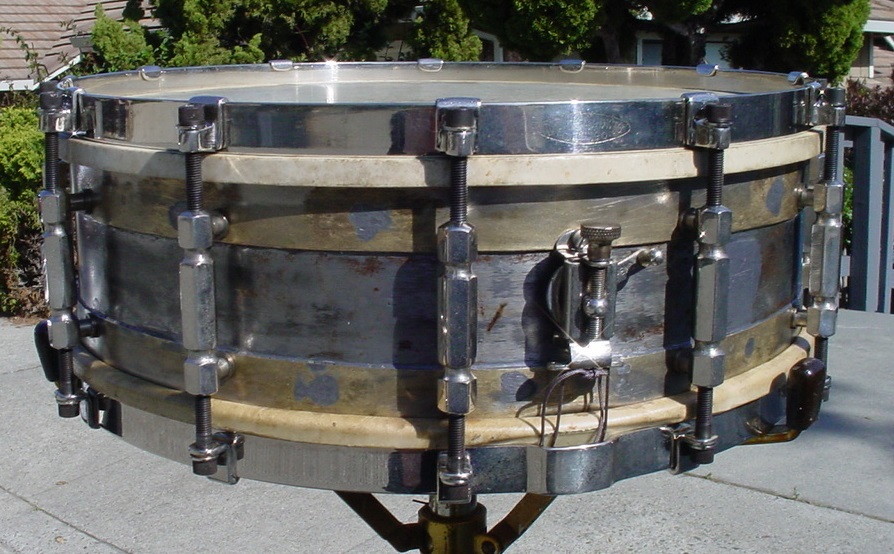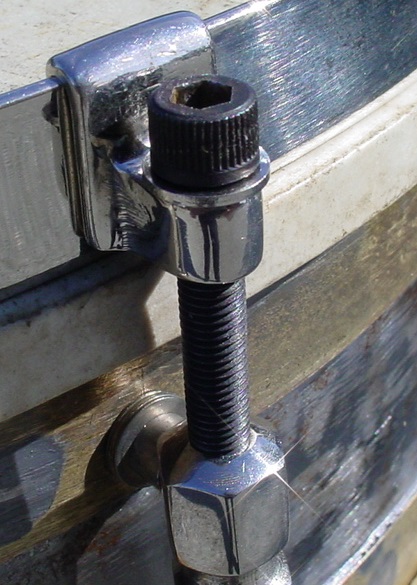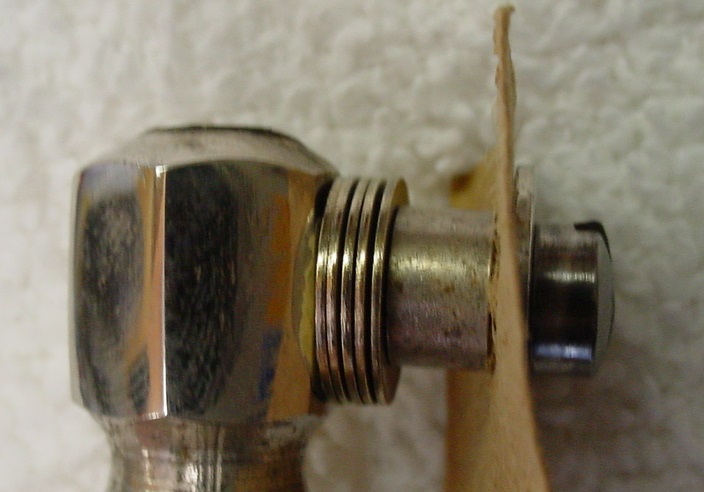Hi all,
Well, here we go...here’s another very weird snare drum that has been in my restoration queue for some time. This drum reminds me of those Desert *Rat Buggies that are put together with all sorts of non-matching, weird parts, rusty body parts and who knows what else. Kind of a “Mad Max” theme, this drum would fit in perfectly right next to that crazy guitar player in the latest Mad Max movie... you will see what I mean.
*definition: Rat Rod, An off-road vehicular device of any sort which is far below the level of expectation for a vehicle of this type. The hot rods that are built in this particular fashion are commonly known for being highly exaggerated versions of 1950s style Jalopy hot rods. By highly exaggerated jalopies, we mean cars that are built to look poorly done on purpose, usually thrown together from old junk parts, and are usually poorly constructed as well as being built with little regard for safety. Ask the average gear-head what a “rat rod” is and they will tell you it is a pile of junk on wheels.
Typical Rat Rods
1920s-30s? LUDWIG & LUDWIG? 5 x 14 NOS/NOB 12 LUG “RAT” SNARE DRUM
The SHELL:
This snare drum started out as a 5 x 14 nos shell. The following is something that I have never seen before. The shell is drilled for 12 lugs, the c-c spacing is 2 1/8” (1/8” wider than the 2” c-c that L & L used for their 5 x 14 tube lug models). Now imagine a 5” nob shell that has had the middle cut out and the two remaining pieces including the bearing edges are rolled over both sides of the original 5 x 14 steel shell and then soldered on the inside and outside. I’m not making this stuff up as the photos will prove. The bearing edges and crimped snare beds are the same as we see on normal 1920s-30s L & L brass snare drums. There is an air hole grommet. I decided to leave the shell rustic, it just felt right on this unique snare drum and it kept with the “Rat” drum theme.
The HARDWARE:
The nickel plating was in excellent-plus condition and looked to be more heavily plated than usual so all that was needed was a wipe down with a clean cloth. The 12 steel lugs are of a design that I’ve never seen before. The lugs are attached to the shell in a very unique way: starting from inside, we see the same type of 8-32 attachment screws that are used on Slingerland Radio King Models: moving to the outside, the attachment continues with 4 brass washers and a type of “spacer” that finally threads into the lugs. The tension rods used on this drum are 1/4 – 28 *Allen Head Bolts that are much heartier than the 12-24 threaded tension rods that are normally seen on a drum from this era. The Ludwig & Ludwig stamped top rim and the bottom rim are the steel band type used on early Universal Models and as stated the nickel plating is in excellent-plus condition, especially for steel rims of that era. The top 12 collar hooks are different from the bottom 12 collar hooks. The P-338 strainer has the wrong threaded part but it works fine so I decided to just leave it as is. The butt plated was installed upside down but I left that as is also as it goes with the theme of this strange snare drum. Both the P-338 and the butt plate have been bolstered with the use of the aforementioned Slingerland 8-32 attachment screws/nuts vs. the 4-40 attachment screws/nuts that would normally be seen on a drum from this era.
*definition: An Allen wrench, Allen key, hex key or hex head wrench is a tool used to drive Allen screws and bolts, which have a hexagonal socket in the head. ... the name Inbus™, named after the company that invented them in 1936.
Top and bottom calf heads and a nice set of James Snappi Wires added the finishing touch to this restoration.
The more I got into this restoration the more I enjoyed the experience, I really felt the “attitude” of defiance in this snare drum. Take a good look at the photos... would you bring this drum home to your family?
As always I welcome your input and observations.
Enjoy!














